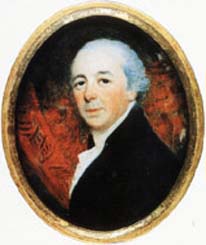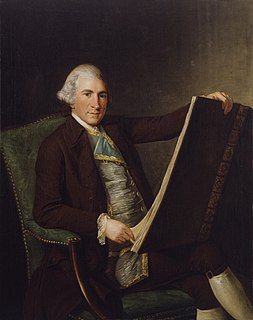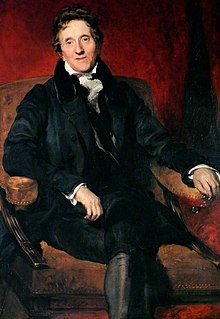This article needs additional citations for verification .(February 2015) |
| |||
|---|---|---|---|
The year 1824 in architecture involved some significant events.
This article needs additional citations for verification .(February 2015) |
| |||
|---|---|---|---|
The year 1824 in architecture involved some significant events.




Sir Giles Gilbert Scott was a British architect known for his work on the New Bodleian Library, Cambridge University Library, Lady Margaret Hall, Oxford, Battersea Power Station, Liverpool Cathedral, and designing the iconic red telephone box. Scott came from a family of architects. He was noted for his blending of Gothic tradition with modernism, making what might otherwise have been functionally designed buildings into popular landmarks.

John Nash was one of the foremost British architects of the Georgian and Regency eras, during which he was responsible for the design, in the neoclassical and picturesque styles, of many important areas of London. His designs were financed by the Prince Regent and by the era's most successful property developer, James Burton. Nash also collaborated extensively with Burton's son, Decimus Burton.

Robert Adam was a British neoclassical architect, interior designer and furniture designer. He was the son of William Adam (1689–1748), Scotland's foremost architect of the time, and trained under him. With his older brother John, Robert took on the family business, which included lucrative work for the Board of Ordnance, after William's death.

Sir Charles BarryFRS RA was a British architect, best known for his role in the rebuilding of the Palace of Westminster in London during the mid-19th century, but also responsible for numerous other buildings and gardens. He is known for his major contribution to the use of Italianate architecture in Britain, especially the use of the Palazzo as basis for the design of country houses, city mansions and public buildings. He also developed the Italian Renaissance garden style for the many gardens he designed around country houses.

Sir John Soane was an English architect who specialised in the Neo-Classical style. The son of a bricklayer, he rose to the top of his profession, becoming professor of architecture at the Royal Academy and an official architect to the Office of Works. He received a knighthood in 1831.
Elias George Basevi FRS was a British architect who worked in both Neoclassical and Gothic Revival styles. A pupil of Sir John Soane, his designs included Belgrave Square in London, and the Fitzwilliam Museum in Cambridge. He was surveyor to the Guardian Assurance Company, to the Trustees of Smith's Charity and to the Thurloe estate.

James Wyatt was an English architect, a rival of Robert Adam in the neoclassical and neo-Gothic styles. He was elected to the Royal Academy in 1785 and was its president from 1805 to 1806.

Regency architecture encompasses classical buildings built in the United Kingdom during the Regency era in the early 19th century when George IV was Prince Regent, and also to earlier and later buildings following the same style. The period coincides with the Biedermeier style in the German-speaking lands, Federal style in the United States and the French Empire style. Regency style is also applied to interior design and decorative arts of the period, typified by elegant furniture and vertically striped wallpaper, and to styles of clothing; for men, as typified by the dandy Beau Brummell and for women the Empire silhouette.
The year 1964 in architecture involved some significant architectural events and new buildings.
The year 1823 in architecture involved some significant events.
The year 1817 in architecture involved some significant events.
The year 1816 in architecture involved some significant architectural events and new buildings.

George Dancethe younger, RA was an English architect and surveyor as well as a portraitist.

Sir William Tite was an English architect who twice served as President of the Royal Institute of British Architects. He was particularly associated with various London buildings, with railway stations and cemetery projects. He was the Member of Parliament (MP) for Bath from 1855 until his death.
William Wilkins was an English architect, classical scholar and archaeologist. He designed the National Gallery and University College London, and buildings for several Cambridge colleges.

Sir Robert Smirke was an English architect, one of the leaders of Greek Revival architecture, though he also used other architectural styles. As architect to the Board of Works, he designed several major public buildings, including the main block and façade of the British Museum. He was a pioneer of the use of concrete foundations.
The year 1831 in architecture involved some significant events.
The year 1827 in architecture involved some significant architectural events and new buildings.
The year 1829 in architecture involved some significant events.

Sir Jeffry Wyatville was an English architect and garden designer. Born Jeffry Wyatt into an established dynasty of architects, in 1824 he was allowed by King George IV to change his surname to Wyatville. He is mainly remembered for making alterations and extensions to Chatsworth House and Windsor Castle.